-
 Bitcoin
Bitcoin $105,734.0170
-1.51% -
 Ethereum
Ethereum $2,414.7328
-3.26% -
 Tether USDt
Tether USDt $1.0002
0.00% -
 XRP
XRP $2.1748
-2.62% -
 BNB
BNB $647.5663
-1.72% -
 Solana
Solana $148.1710
-3.81% -
 USDC
USDC $0.9999
-0.01% -
 TRON
TRON $0.2799
-0.02% -
 Dogecoin
Dogecoin $0.1586
-4.17% -
 Cardano
Cardano $0.5440
-5.03% -
 Hyperliquid
Hyperliquid $37.0680
-6.59% -
 Bitcoin Cash
Bitcoin Cash $501.2052
-4.01% -
 Sui
Sui $2.6846
-3.47% -
 Chainlink
Chainlink $12.8488
-3.38% -
 UNUS SED LEO
UNUS SED LEO $8.9480
-1.51% -
 Avalanche
Avalanche $17.2059
-3.87% -
 Stellar
Stellar $0.2270
-4.75% -
 Toncoin
Toncoin $2.7889
-3.93% -
 Shiba Inu
Shiba Inu $0.0...01126
-1.76% -
 Litecoin
Litecoin $83.6893
-3.36% -
 Hedera
Hedera $0.1445
-4.49% -
 Monero
Monero $312.4014
-2.58% -
 Dai
Dai $1.0000
0.00% -
 Ethena USDe
Ethena USDe $1.0001
-0.01% -
 Polkadot
Polkadot $3.2920
-3.32% -
 Bitget Token
Bitget Token $4.4629
-1.81% -
 Uniswap
Uniswap $6.5386
-8.42% -
 Aave
Aave $260.3780
-6.01% -
 Pepe
Pepe $0.0...09308
-4.54% -
 Pi
Pi $0.4864
-3.04%
What is the difference between trading AVAX on an exchange and on a decentralized platform? Which is more cost-effective?
Trading AVAX can be done on CEXs like Binance or DEXs like Uniswap, each with unique features and costs; the most cost-effective option depends on trading frequency and size.
May 04, 2025 at 09:15 am
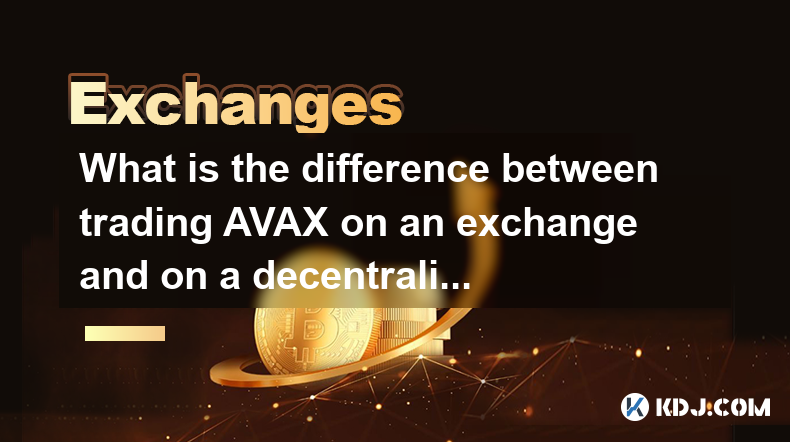
Trading AVAX, the native cryptocurrency of the Avalanche blockchain, can be done on both centralized exchanges (CEXs) and decentralized platforms (DEXs). Each method has its unique features, advantages, and cost structures. This article will explore the differences between trading AVAX on these platforms and determine which is more cost-effective.
Understanding Centralized Exchanges (CEXs)
Centralized exchanges are platforms operated by a single entity that facilitates the trading of cryptocurrencies. Examples include Binance, Coinbase, and Kraken. These exchanges are known for their user-friendly interfaces and high liquidity.
- Liquidity: CEXs typically have higher liquidity, which means you can buy or sell larger amounts of AVAX without significantly affecting the price.
- User Interface: The interfaces are often more intuitive and easier to navigate, making them suitable for beginners.
- Security: While CEXs have robust security measures, they are also a target for hackers. Users must trust the exchange with their funds.
- Regulation: Many CEXs are regulated, which can provide a sense of security but also means they must comply with KYC (Know Your Customer) and AML (Anti-Money Laundering) regulations.
Understanding Decentralized Exchanges (DEXs)
Decentralized exchanges operate on blockchain technology and allow users to trade directly with each other without an intermediary. Examples include Uniswap, SushiSwap, and Trader Joe on the Avalanche network.
- Control: DEXs give users full control over their funds, as they do not need to deposit their AVAX into the exchange.
- Anonymity: Users can trade without KYC, offering more privacy.
- Security: Since DEXs do not hold user funds, they are less vulnerable to hacks. However, users must manage their private keys securely.
- Liquidity: Liquidity can be lower compared to CEXs, which may result in higher slippage when trading large amounts.
Trading AVAX on Centralized Exchanges
To trade AVAX on a centralized exchange, follow these steps:
- Sign Up: Register an account on the exchange. You will need to provide personal information and complete KYC verification.
- Deposit Funds: Deposit fiat currency or another cryptocurrency into your account. If you are depositing fiat, you may need to link a bank account.
- Buy AVAX: Navigate to the trading section, select the AVAX trading pair (e.g., AVAX/USDT), and place your order. You can choose between market orders, which execute immediately at the current market price, or limit orders, which execute at a specified price.
- Withdraw: Once you have completed your trade, you can withdraw your AVAX to a private wallet or keep it on the exchange.
Trading AVAX on Decentralized Exchanges
Trading AVAX on a decentralized exchange involves different steps:
- Connect Wallet: Use a compatible wallet like MetaMask or Avalanche Wallet to connect to the DEX. Ensure your wallet has AVAX or another token to trade.
- Select Trading Pair: Choose the trading pair you want to use, such as AVAX/USDT.
- Swap Tokens: Enter the amount of AVAX you want to buy or sell and confirm the transaction. The DEX will calculate the amount of the other token you will receive, including any fees.
- Confirm Transaction: Review the transaction details and confirm it in your wallet. The transaction will be processed on the blockchain, and you will receive your tokens once it is confirmed.
Cost Comparison: CEXs vs. DEXs
The cost-effectiveness of trading AVAX on CEXs versus DEXs depends on several factors, including trading fees, withdrawal fees, and gas fees.
- Trading Fees: CEXs typically charge a percentage of the trade value as a fee, which can range from 0.1% to 0.5%. Some exchanges offer reduced fees for high-volume traders or those using their native tokens. DEXs, on the other hand, often charge a flat fee per transaction, which is usually a percentage of the trade value plus a gas fee for processing the transaction on the blockchain.
- Withdrawal Fees: When withdrawing AVAX from a CEX to a private wallet, you will incur a withdrawal fee. This fee varies by exchange but can be significant. DEXs do not have withdrawal fees since you control your funds at all times.
- Gas Fees: DEXs require gas fees to process transactions on the blockchain. These fees can fluctuate based on network congestion and can be higher during peak times. CEXs do not have gas fees since they handle transactions internally.
Which is More Cost-Effective?
Determining which platform is more cost-effective depends on your trading habits and the specific fees of the platforms you use. Here are some considerations:
- Frequency of Trading: If you trade frequently, the lower trading fees on CEXs might make them more cost-effective. However, if you trade less often, the higher trading fees on DEXs might be offset by the lack of withdrawal fees.
- Trade Size: For large trades, the higher liquidity on CEXs can result in lower slippage, making them more cost-effective. For smaller trades, the difference in slippage may be negligible.
- Network Fees: If gas fees on the Avalanche network are high, trading on a DEX might be less cost-effective. However, if gas fees are low, the overall cost might be comparable to or even lower than trading on a CEX.
Frequently Asked Questions
Q: Can I trade AVAX on both CEXs and DEXs with the same wallet?
A: No, you typically need to use different wallets for CEXs and DEXs. For CEXs, you will use the wallet provided by the exchange, while for DEXs, you will use a self-custody wallet like MetaMask or Avalanche Wallet.
Q: Are there any risks associated with trading AVAX on DEXs?
A: Yes, trading on DEXs involves risks such as smart contract vulnerabilities, impermanent loss if you provide liquidity, and the need to manage your private keys securely. Always research the DEX and understand the risks before trading.
Q: How can I minimize trading fees on CEXs?
A: To minimize trading fees on CEXs, you can use their native tokens for trading, which often comes with reduced fees. Additionally, some exchanges offer fee discounts for high-volume traders or those who hold a certain amount of their native token.
Q: Is it possible to trade AVAX without KYC on CEXs?
A: Generally, no. Most CEXs require KYC verification to comply with regulatory requirements. If you want to trade without KYC, you should use a DEX, which does not require personal identification.
Disclaimer:info@kdj.com
The information provided is not trading advice. kdj.com does not assume any responsibility for any investments made based on the information provided in this article. Cryptocurrencies are highly volatile and it is highly recommended that you invest with caution after thorough research!
If you believe that the content used on this website infringes your copyright, please contact us immediately (info@kdj.com) and we will delete it promptly.
- Crypto Trends 2025: MAGACOIN FINANCE Surges, Ethereum Mining Evolves, and XRP Payouts Innovate
- 2025-07-02 10:30:12
- Ethereum, MAGACOIN FINANCE, and Inflation: A Shift in Crypto Investor Focus
- 2025-07-02 10:30:12
- Kangaroos, Coin Purses, and a Hop Through Money History: You Gotta See This!
- 2025-07-02 10:50:15
- Arbitrum, Robinhood, and ARB Price: Is a Rebound on the Horizon?
- 2025-07-02 10:50:15
- Cryptos in 2025: Early Backers Cash In?
- 2025-07-02 10:55:17
- Lightchain AI: Bonus Round Buzz and Mainnet Activation on the Horizon
- 2025-07-02 11:10:12
Related knowledge
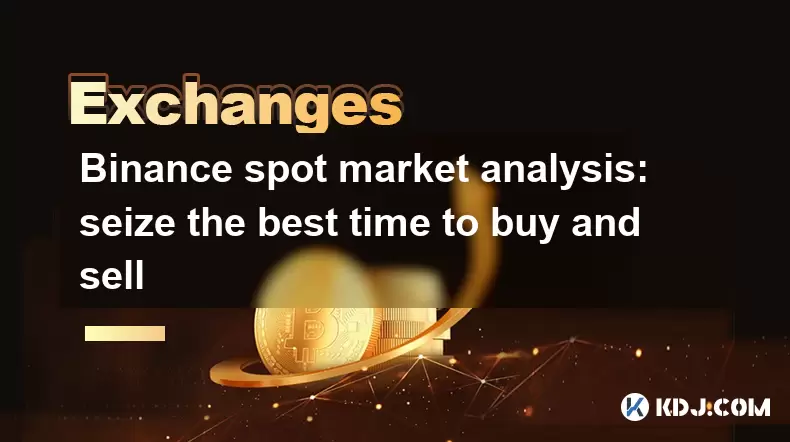
Binance spot market analysis: seize the best time to buy and sell
Jun 19,2025 at 04:56pm
Understanding the Binance Spot MarketThe Binance spot market is one of the most popular platforms for cryptocurrency trading globally. It allows users to trade digital assets at current market prices, making it essential for traders aiming to buy low and sell high. Unlike futures or margin trading, spot trading involves direct ownership of the asset aft...
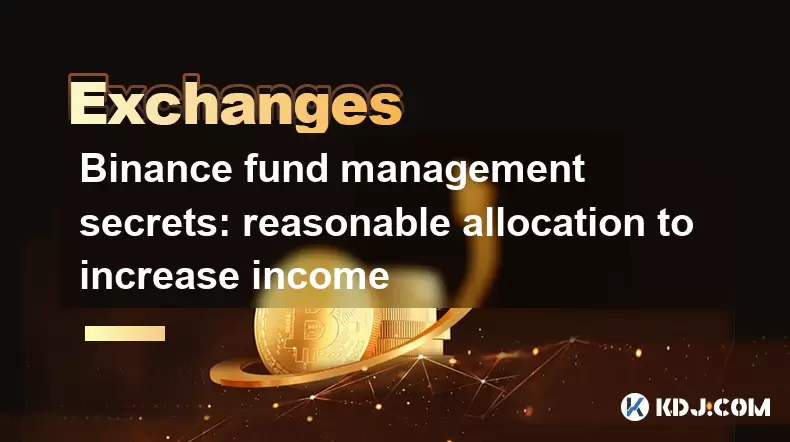
Binance fund management secrets: reasonable allocation to increase income
Jun 22,2025 at 02:29pm
Understanding Binance Fund ManagementBinance fund management involves strategic allocation of your cryptocurrency assets to optimize returns while managing risk. The key to successful fund management lies in understanding how different investment options on the Binance platform can be utilized to create a diversified portfolio. This includes spot tradin...
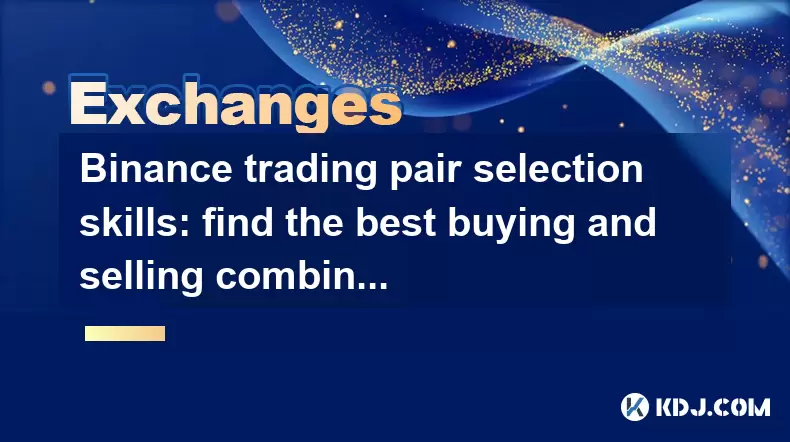
Binance trading pair selection skills: find the best buying and selling combination
Jun 23,2025 at 02:49am
Understanding the Basics of Trading Pairs on BinanceBefore diving into trading pair selection skills, it's essential to understand what a trading pair is. On Binance, a trading pair refers to two cryptocurrencies that can be traded against each other. For example, BTC/USDT means Bitcoin is being traded against Tether. Each trading pair has its own liqui...
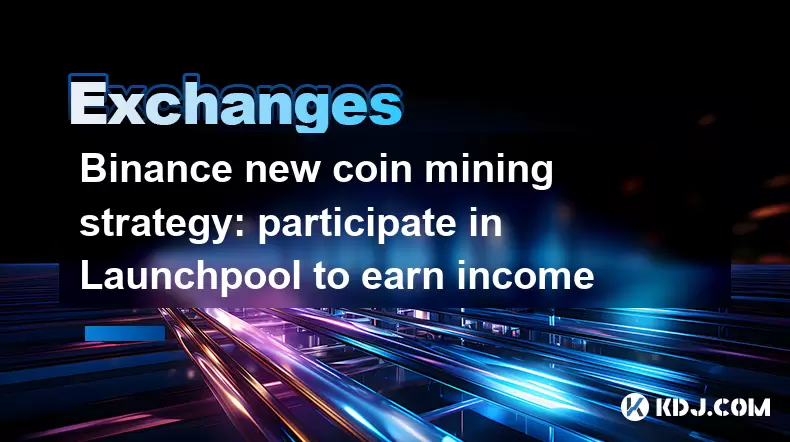
Binance new coin mining strategy: participate in Launchpool to earn income
Jun 23,2025 at 11:56am
What is Binance Launchpool and how does it work?Binance Launchpool is a feature introduced by the world’s largest cryptocurrency exchange, Binance, to allow users to earn new tokens through staking. This platform enables users to stake their existing cryptocurrencies (such as BNB, BUSD, or other supported assets) in exchange for newly launched tokens. T...
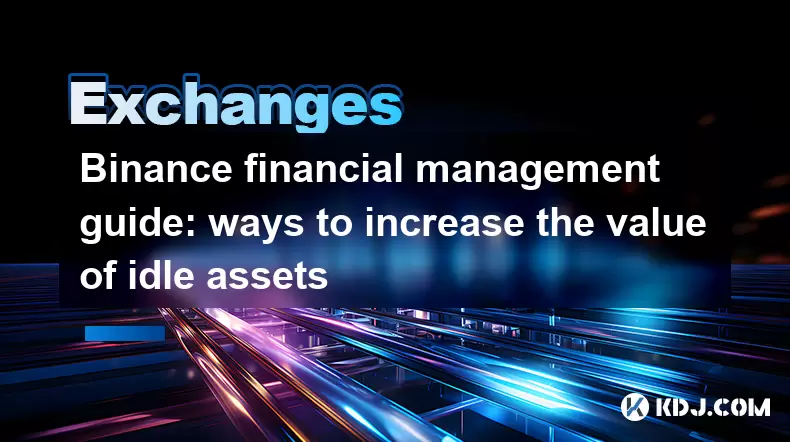
Binance financial management guide: ways to increase the value of idle assets
Jun 19,2025 at 11:22pm
Understanding Idle Assets in the Cryptocurrency SpaceIn the fast-paced world of cryptocurrency, idle assets refer to digital currencies that are not actively being used for trading, staking, or yield farming. Holding these funds in a wallet without utilizing them means missing out on potential growth opportunities. Binance, as one of the leading platfor...
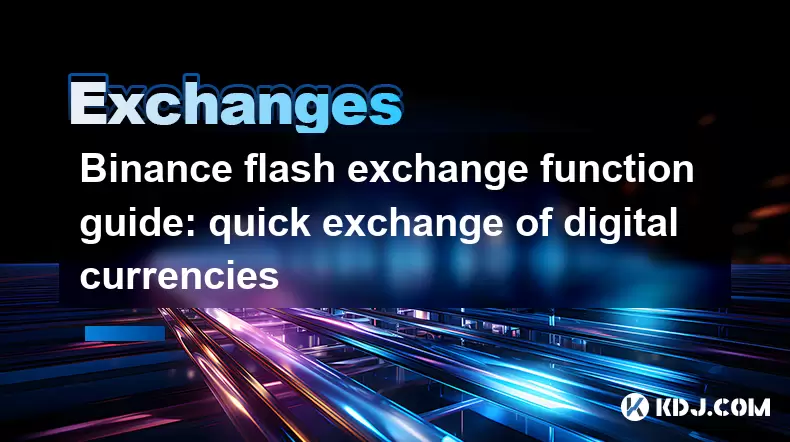
Binance flash exchange function guide: quick exchange of digital currencies
Jun 23,2025 at 12:29pm
What is the Binance Flash Exchange Function?The Binance Flash Exchange function is a powerful tool designed to allow users to instantly swap between supported cryptocurrencies without the need for placing traditional buy/sell orders. This feature simplifies the trading process by offering a direct exchange mechanism, eliminating the requirement to conve...

Binance spot market analysis: seize the best time to buy and sell
Jun 19,2025 at 04:56pm
Understanding the Binance Spot MarketThe Binance spot market is one of the most popular platforms for cryptocurrency trading globally. It allows users to trade digital assets at current market prices, making it essential for traders aiming to buy low and sell high. Unlike futures or margin trading, spot trading involves direct ownership of the asset aft...

Binance fund management secrets: reasonable allocation to increase income
Jun 22,2025 at 02:29pm
Understanding Binance Fund ManagementBinance fund management involves strategic allocation of your cryptocurrency assets to optimize returns while managing risk. The key to successful fund management lies in understanding how different investment options on the Binance platform can be utilized to create a diversified portfolio. This includes spot tradin...

Binance trading pair selection skills: find the best buying and selling combination
Jun 23,2025 at 02:49am
Understanding the Basics of Trading Pairs on BinanceBefore diving into trading pair selection skills, it's essential to understand what a trading pair is. On Binance, a trading pair refers to two cryptocurrencies that can be traded against each other. For example, BTC/USDT means Bitcoin is being traded against Tether. Each trading pair has its own liqui...

Binance new coin mining strategy: participate in Launchpool to earn income
Jun 23,2025 at 11:56am
What is Binance Launchpool and how does it work?Binance Launchpool is a feature introduced by the world’s largest cryptocurrency exchange, Binance, to allow users to earn new tokens through staking. This platform enables users to stake their existing cryptocurrencies (such as BNB, BUSD, or other supported assets) in exchange for newly launched tokens. T...

Binance financial management guide: ways to increase the value of idle assets
Jun 19,2025 at 11:22pm
Understanding Idle Assets in the Cryptocurrency SpaceIn the fast-paced world of cryptocurrency, idle assets refer to digital currencies that are not actively being used for trading, staking, or yield farming. Holding these funds in a wallet without utilizing them means missing out on potential growth opportunities. Binance, as one of the leading platfor...

Binance flash exchange function guide: quick exchange of digital currencies
Jun 23,2025 at 12:29pm
What is the Binance Flash Exchange Function?The Binance Flash Exchange function is a powerful tool designed to allow users to instantly swap between supported cryptocurrencies without the need for placing traditional buy/sell orders. This feature simplifies the trading process by offering a direct exchange mechanism, eliminating the requirement to conve...
See all articles

























































































